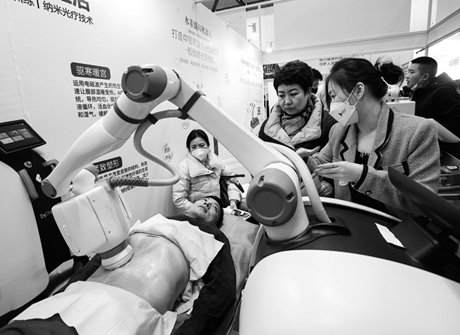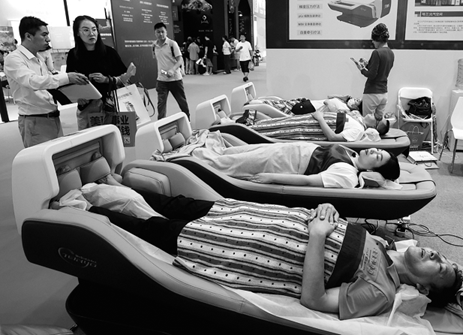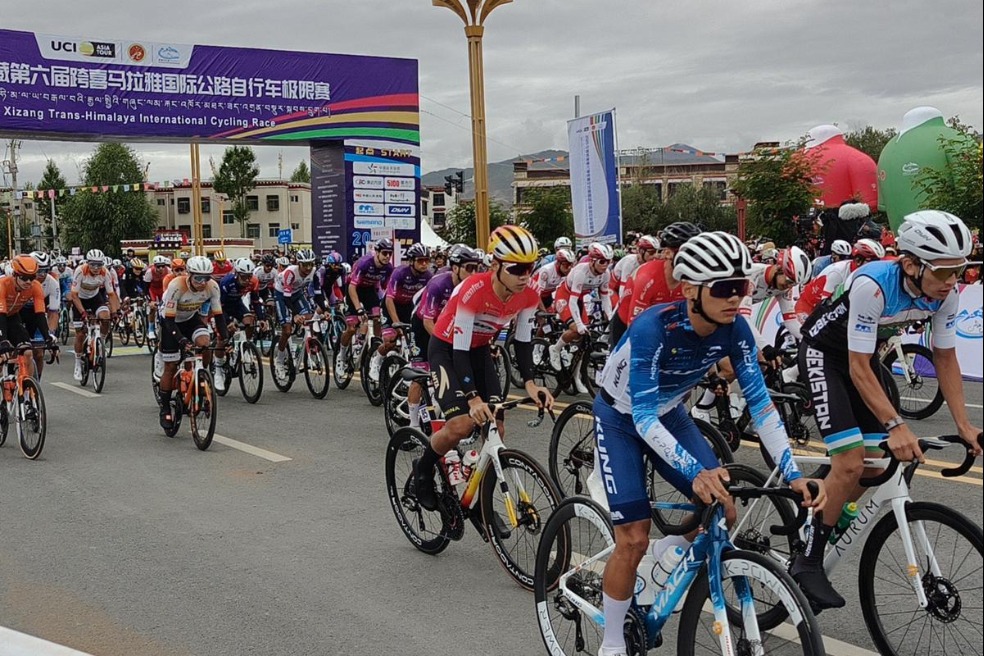Medical aesthetics market reaches breakout point
Competition, regulation intensify amid sector's push for high-quality development

China's medical aesthetics industry is undergoing quality upgrades and embarking on the path of high-quality development, with consumers increasingly pursuing self-improvement amid intensified industry competition and heightened regulatory efforts, officials and industry experts said.
When China rolled out its reform and opening-up policies in the late 1970s, the domestic medical aesthetics industry sprouted to ride the era of liberalization, gradually evolving into a dynamic landscape characterized by rapid growth and expansion. It is now on the threshold of another new stage — high-quality development driven by medical expertise and prowess, said Li Bin, founder and chairman of BeauCare Clinics Medical Investment Group Co Ltd.
Sun Lijian, director of the Financial Research Center at Fudan University, said in an earlier interview that as the fundamentals of China's long-term sound growth remain unchanged, the current focus should be on boosting market confidence and exploring new growth drivers, where the medical aesthetics industry — a prime example of new consumption trends — has a role to play.
Potential unleashed
"Owing to improved life quality, development of the industry and rising awareness of consumer demand for beauty enhancement, consumption of services of the medical aesthetics industry has increased strongly, transforming what was once a niche sector for high-income groups into a mainstream business," Li said.
With revenue reaching 200 billion yuan ($27.6 billion), China's medical aesthetics market expanded by 20 percent in 2023, with the compound annual growth rate expected to be 15 percent in the next four years, thanks to the resilience of the country's economy and growing demand for medical aesthetics, said a report from Deloitte last year.
In addition, China's huge consumer base and relatively low penetration rate are expected to further unleash the potential of the industry. According to online cosmetic treatment platform SoYoung, the consumer base for medical aesthetics in China reached 23.54 million in 2023.
Although the Chinese medical aesthetics market's penetration rate rose to 4.5 percent in 2022 from 3.6 percent in 2019, it still lags behind more developed markets such as Japan, the United States and South Korea, whose penetration rates were 2.5 times, 3.8 times and 4.9 times that of China, respectively, indicating significant room for further development in the future, said Dongguan Securities in a report.
Intensified competition
Data from the National Health Commission showed in January that the number of regulation-compliant specialized medical aesthetics institutions in China reached 18,584 — excluding public institutions and private comprehensive institutions, which account for about 10 percent of the total number based on past data.
Hangzhou in Zhejiang province, Xi'an in Shaanxi province, Beijing, Chengdu in Sichuan province, and Shanghai are the top five cities that had the most newly established institutions (with 0-5 years of operations) as of January 2023, according to the Deloitte report. Their newly established institutions accounted for 69 percent, 67 percent, 53 percent, 50 percent and 48 percent of the nation's total, respectively.
This propelled medical institutions to embrace new trends such as online platforms, and attach greater importance to marketing in their development strategy.
During last year's Singles' Day shopping spree around Nov 11, the price of the well-known Juvederm dermal filler collection dropped to as low as 1,999 yuan per syringe during the livestreaming sessions of several medical aesthetics institutions, whereas their market price typically ranges from 9,000 yuan to 12,000 yuan per syringe.
"Looking back at the past year, the medical aesthetics market has shown a trend of 'strong start but weak finish', with price-oriented competition making revenue fall short of expectations, leading to chaotic development of the industry," said Jin Xing, chairman and CEO of SoYoung.
The overly intense competition and vicious rivalry among private medical aesthetics institutions have triggered a series of issues, posing significant challenges to the healthy and smooth development of the industry, Jin said.
The escalating price war is reducing medical aesthetics to a labor-intensive industry, while it is supposed to be a knowledge-intensive one due to its knowledge- and expertise-driven nature, said Li of BeauCare Clinics.
"The level of medical prowess, not prices, should always be the core competitive strength of an institution," he said. "If medical treatment is geared toward growth ends and consumer demand, it can easily lead to over-diagnosis and overtreatment."
In addition, upstream material and equipment manufacturers are also adapting to market demand by increasing their promotional efforts and continuously launching simpler-to-use and more effective products to stimulate growth of medical aesthetics consumption, said Wu Wenyun, director of Beijing-based Myoung BeauCare Clinic.
"Although consumers can now access medical aesthetics information through increasingly diverse channels, the information may sometimes be inaccurate or distorted, which may lead to risks and pitfalls in their pursuit of beauty," Wu said.
Medical nature
The medical aesthetics industry has witnessed a series of stricter regulations since the beginning of last year, with measures becoming more specific and systematic, aimed at ensuring the industry returns to its "medical nature".
The Supreme People's Procuratorate issued a document on strengthened regulation of medical aesthetics advertising in January last year, followed by a compilation of opinions — meant to be used as guidance on further strengthening the supervision of the medical aesthetics industry — by the State Administration for Market Regulation and 10 other departments in May last year. They clearly define medical aesthetics services as a kind of medical activity that must comply with relevant laws and regulations on industry access.
In January, the Chinese Association of Plastics and Aesthetics released its annual report on operational risks and early warning of medical aesthetics, which compiled the top 10 operational risks such as illegal purchase and use of non-compliant products, drug and medical device violations, false advertising and illegal practices.
"Whether private or public, medical aesthetics institutions should return to their medical nature, giving the treatment choices taken by front desk consultants and sales staff back to doctors. Pursuing such a change will guide the high-quality development of the industry in the future," said Gao Jianhua, vice-chairman of the CAPA.
Guiding the medical aesthetics industry to return to its "medical nature" involves two key points -medical services and medical quality, with a focus on patient experience and medical safety, respectively, said Cao Dequan, executive secretary-general of the CAPA.
"If medical institutions can leverage their expertise to excel, there will be no need to rely on marketing and low prices to attract patients, which will significantly reduce operational costs," Cao said.
"In pursuit of high-quality development, the medical aesthetics industry is poised to enter a phase of sound growth, which will be led by doctors' expertise," Li of BeauCare Clinics said.



Today's Top News
- Chengdu games hailed as the new benchmark
- Xi, Lula pledge to deepen China-Brazil cooperation
- China, US reach deal to extend tariff suspension
- Demand for?Nvidia’s H20 chip lackluster
- Washington not incarnation of justice: China Daily editorial
- Tariff truce gains time for talks although some tough issues remain to be resolved





























